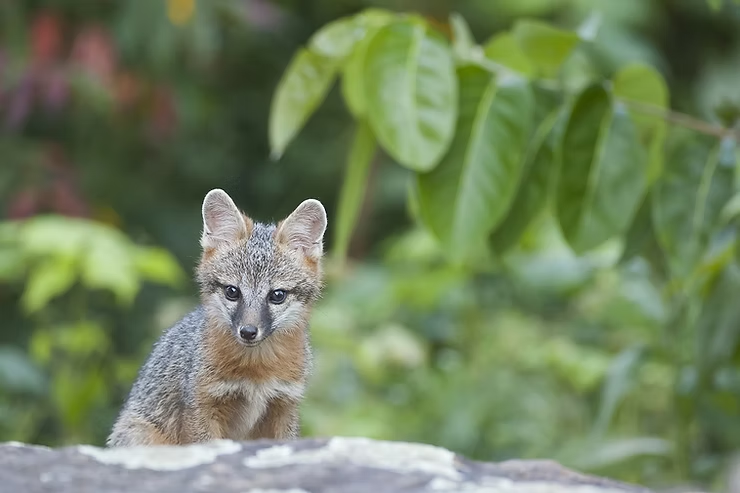A fox in a tree? Gray foxes are good climbers
- Willy's Wilderness
- Feb 9, 2021
- 3 min read
Updated: Jul 24
The gray fox (Urocyon cinereoargenteus) is the only canid in America that climbs trees! A canid is a member of the animal family Canidae, which includes dogs, wolves, coyotes, foxes and jackals.

Gray foxes use their front legs to grasp a tree trunk, then use their back legs to push themselves up. They climb trees to forage, rest or escape danger. They have even been found in both hawk and squirrel nests as high as 60 feet above the ground.
Gray foxes are smaller than coyotes and slightly smaller than red foxes. Whey they are fully grown, they weigh between 10 pounds and 12 pounds. They are salt-and-pepper colored on their backs, faces, snouts and the tops of their tails. They have a white throat and belly and orange fur along the edges and sides where the white and gray meet. Their tails are long and fluffy with a black stripe down the middle and rusty orange underneath.
They can be hunted by coyotes, bobcats and sometimes humans, but they are great hunters themselves. They use their sharp senses of sight, smell and sound to find their food.
Gray foxes are opportunistic foragers. That means they are not picky at all and will eat whatever is around. Their favorite food is rabbits, but they also eat other small mammals, crayfish, reptiles, turkeys, ducks and carrion, which is dead animals.
Their diet will change with the seasons. In the summer months, they will stalk insects, devour fruits and berries and even venture into farm fields to snag corn and other grains.

Breeding season for the gray fox is February through March. A pair will select a den in a hollow log, tree base or rock crevice, or steal a well-hidden home made by another animal. They will have a second and even third den ready to move into if trouble arises at the first.
The female is pregnant for about seven and a half weeks. On average, they have three to five pups, and they are born by mid-May. The tiny pups are covered with black fur and weigh only 3 ounces when first born. That’s about as much as 30 pennies weigh.
The babies do not open their eyes until they between nine and 12 days old. The mother will nurse the little pups for 12 weeks. During this time, the male is out hunting and delivering food to the vixen, the female fox.
When the young pups are ready to leave the den, they go out with their parents and hunt together. After another month, they have all their adult teeth and can hunt un their own, but the family will stay together for a short while longer. By wintertime, everyone is on their own until mating season begins again. The pups are ready to mate even before they are 1 year old.
Although gray foxes are listed as living throughout Illinois, red foxes are much more common and have even adapted to our suburban areas. The gray fox stays secretive in its wooded habitat. It is more common in the forested southern part of the state and along the Illinois and Mississippi rivers. But you never know. A trail camera just spotted a bobcat in our county a few months ago. Maybe a sighting of the elusive gray fox will be next!


